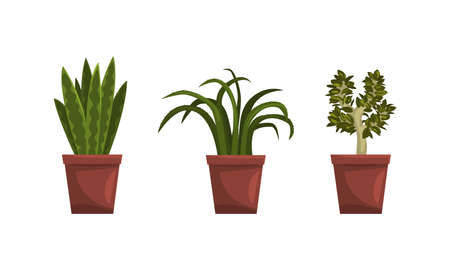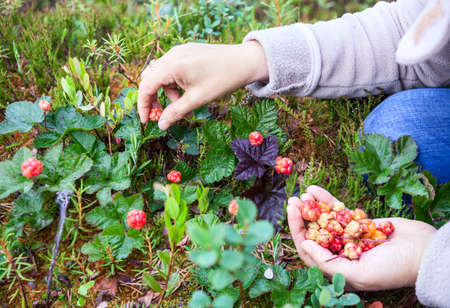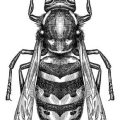1. Understanding the Roles Insects Play in Your Garden
Insects are everywhere in your garden, but not all of them are bad news. Some bugs help your plants grow strong and healthy, while others can cause damage and stress to your garden. Knowing the difference between helpful and harmful insects is a key part of managing your garden effectively.
Why Insects Matter
Insects play many roles in your gardens ecosystem. Some pollinate flowers, helping fruits and vegetables grow. Others eat pests that would otherwise harm your plants. But there are also insects that feed on leaves, stems, roots, or fruits, causing visible damage or even killing plants if left unchecked.
Good Bugs vs. Bad Bugs
To better understand which insects are helping and which are hurting your garden, take a look at this simple breakdown:
| Type of Insect | Examples | Role in the Garden |
|---|---|---|
| Beneficial Insects | Ladybugs, bees, lacewings, parasitic wasps, ground beetles | Pollinate plants, eat harmful pests, improve soil health |
| Harmful Insects | Aphids, Japanese beetles, cutworms, squash bugs, spider mites | Feed on plants, spread diseases, stunt growth or kill crops |
How to Start Identifying Insects in Your Garden
The first step to distinguishing between harmful and beneficial insects is observation. Spend time in your garden regularly and take note of the bugs you see. Look for signs like chewed leaves, sticky residue (from pests like aphids), or clusters of eggs on plant stems. Also watch for pollinators like bees buzzing around flowers or ladybugs crawling on leaves looking for aphids to eat.
Tip:
Keep a small notebook or use your phone to snap pictures and track what you find. Over time, youll begin to recognize patterns and identify which insects are common visitors to your garden—and whether theyre helping or hurting.
Balancing the Ecosystem Naturally
Your goal isn’t to eliminate all insects—just the ones doing harm. Encouraging beneficial bugs can often reduce the need for chemical pesticides. By understanding what each insect does in your garden, you’ll be better equipped to create a balanced environment where plants thrive and pest problems stay under control.
2. Common Beneficial Insects and How to Identify Them
Not all bugs in your garden are bad! In fact, many insects are helpful allies that keep harmful pests under control naturally. These beneficial insects can reduce or even eliminate the need for chemical pesticides. Let’s take a closer look at some of the most common “good bugs” you’ll want to welcome into your garden.
Ladybugs (Lady Beetles)
Ladybugs are one of the most well-known beneficial insects. They’re easy to spot with their round, dome-shaped bodies and bright red or orange shells with black spots. Both adult ladybugs and their larvae feed on aphids, mites, and other soft-bodied pests.
What to Look For:
- Adults: Red or orange with black spots
- Larvae: Alligator-shaped, dark-colored with orange markings
How They Help:
One ladybug can eat up to 50 aphids a day!
Lacewings
Green lacewings are delicate-looking insects with large, transparent wings. While adults may feed on nectar, their larvae are voracious predators of many garden pests, including aphids, thrips, and whiteflies.
What to Look For:
- Adults: Light green body with large see-through wings
- Larvae: Brownish, elongated body often called “aphid lions”
How They Help:
Lacewing larvae can consume hundreds of aphids in just a few days.
Parasitic Wasps
These tiny wasps don’t sting humans but are deadly to many garden pests. Parasitic wasps lay their eggs inside or on harmful insects like caterpillars or aphids. When the eggs hatch, they feed on the host insect, eventually killing it.
What to Look For:
- Tiny (often less than 1/8 inch), usually black or brown
- You might see mummified aphids or caterpillars—signs that wasps have done their work
How They Help:
Their unique life cycle keeps pest populations in check naturally.
Quick Reference Table of Beneficial Insects
| Insect | Appearance | Main Prey | Benefit |
|---|---|---|---|
| Ladybug | Red/orange with black spots | Aphids, mites | Eats up to 50 aphids/day |
| Lacewing (larva) | Brownish “aphid lion” shape | Aphids, thrips, whiteflies | Cleans up pest outbreaks quickly |
| Parasitic Wasp | Tiny black/brown insect | Aphids, caterpillars | Kills pests from the inside out |
By learning how to identify these beneficial insects, you can better support them in your garden and create a more balanced ecosystem without relying heavily on chemical controls.

3. Recognizing Harmful Pests and Their Signs
In order to protect your garden, its important to know which insects are doing harm. While some bugs help pollinate flowers or eat other pests, others can damage your plants by feeding on leaves, stems, or roots. Here are a few common harmful insects you might find in your garden, along with the signs they leave behind.
Aphids
Aphids are tiny, soft-bodied insects that come in green, black, brown, or even pink. They usually gather in clusters on new plant growth and feed by sucking sap from stems and leaves.
Signs of Aphids:
- Sticky residue (called honeydew) on leaves or nearby surfaces
- Curling or yellowing leaves
- Presence of ants (theyre attracted to the honeydew)
Japanese Beetles
Japanese beetles are metallic green with copper-colored wings. Theyre most active during the summer and feed on a wide variety of plants including roses, beans, and fruit trees.
Signs of Japanese Beetles:
- Skeletonized leaves (only the leaf veins remain)
- Clusters of beetles feeding on flowers and foliage
- Damaged petals and fruit skins
Squash Bugs
Squash bugs are flat, shield-shaped insects that target squash, pumpkins, and other members of the cucurbit family. Adults and nymphs both cause damage by piercing plant tissues and sucking out sap.
Signs of Squash Bugs:
- Wilting vines, especially during midday heat
- Brown spots on leaves that eventually turn black and brittle
- Clusters of small, reddish-brown eggs on the underside of leaves
Quick Reference Table: Harmful Insects & Their Symptoms
| Insect | Appearance | Main Symptoms | Affected Plants |
|---|---|---|---|
| Aphids | Tiny; green, black, brown or pink; cluster on new growth | Sticky honeydew, curling/yellowing leaves, presence of ants | Roses, tomatoes, beans, many vegetables and ornamentals |
| Japanese Beetles | Shiny green body with copper wings; about 1/2 inch long | Skeletonized leaves, flower damage | Roses, grapes, beans, linden trees, fruit trees |
| Squash Bugs | Flat; grayish-brown; adult is about 5/8 inch long | Wilting vines, browning/crisping leaves, visible eggs under leaves | Squash, pumpkins, zucchini, cucumbers (cucurbits) |
If you spot these signs early enough, you can take action before the damage spreads throughout your garden. Regular inspections and knowing what to look for will help keep your plants healthy all season long.
4. Tolerance Levels: When to Take Action
Not every insect in your garden is a reason to panic. In fact, many insects—even some that nibble on leaves—can be part of a healthy ecosystem. Knowing when to act and when to let nature take its course is key to maintaining a balanced garden without harming beneficial insects.
Assessing Pest Damage
Start by observing the type and extent of damage. Is it cosmetic or is it threatening the health of your plants? A few holes in leaves or minor wilting often isn’t a big deal. But if you notice widespread leaf drop, stunted growth, or dead patches, it may be time to take action.
Common Signs of Damage
| Damage Type | Possible Cause | Action Needed? |
|---|---|---|
| Holes in leaves | Caterpillars, beetles | Monitor; usually tolerable |
| Sticky residue on leaves | Aphids or whiteflies | Yes; can lead to mold growth |
| Yellowing leaves and stunted growth | Root-damaging pests like grubs | Yes; serious impact on plant health |
| Webbing on plants | Spider mites | Yes; can cause plant death if untreated |
Setting Realistic Thresholds
Your garden doesnt need to be pest-free—it needs to be balanced. Set thresholds for acceptable damage levels based on the type of plant, the season, and overall garden goals. For example, ornamental flowers can tolerate more cosmetic damage than vegetable crops meant for eating.
Sample Threshold Guidelines:
- Lettuce & leafy greens: Less than 10% leaf damage before action is taken.
- Tomatoes & fruiting plants: Minor leaf damage tolerated unless fruit is affected.
- Herbs: Moderate tolerance since strong scents deter many pests naturally.
- Flower beds: Higher tolerance; focus on appearance rather than yield.
Deciding When to Intervene
If pest numbers are growing fast and natural predators like ladybugs or lacewings arent keeping up, it may be time to step in. Choose the least harmful methods first—like hand-picking pests or using neem oil spray—before resorting to stronger chemical options that could harm beneficial insects.
Low-Impact Intervention Options:
- Hand removal: Effective for larger pests like caterpillars or beetles.
- Water spray: Knock aphids off plants with a strong blast of water.
- Naturally derived sprays: Neem oil and insecticidal soaps target soft-bodied pests while sparing most beneficials.
- Add beneficial insects: Release ladybugs or parasitic wasps to control infestations biologically.
The key is knowing what level of pest activity your garden can handle while still thriving. A little nibbling here and there is normal—and sometimes even helpful—as it encourages natural predator populations to stick around and keep things in balance.
5. Natural and Eco-Friendly Pest Management Strategies
Once you’ve identified which bugs are helpful and which ones are harmful in your garden, the next step is learning how to manage pests without harming the good guys. Using natural and eco-friendly methods helps keep your garden healthy and supports a balanced ecosystem. Here are some effective strategies you can use:
Companion Planting
Companion planting is a technique where certain plants are grown together to help each other thrive. Some plant combinations can naturally repel pests or attract beneficial insects. For example, marigolds can deter aphids and nematodes, while basil planted near tomatoes can help keep hornworms away.
| Plant | Companion Benefit |
|---|---|
| Marigold | Repels aphids, whiteflies, and nematodes |
| Basil | Deters tomato hornworms and improves tomato flavor |
| Nasturtium | Acts as a trap crop for aphids and caterpillars |
| Chives | Repels Japanese beetles and carrot flies |
Introducing Beneficial Insects
You can actually invite or introduce helpful insects into your garden to control pests naturally. These allies act as natural predators to many common garden pests.
| Beneficial Insect | Pest Targeted |
|---|---|
| Lacewings | Aphids, mealybugs, thrips |
| Ladybugs (Lady beetles) | Aphids, scale insects, mites |
| Parasitic Wasps | Caterpillars, whiteflies, leaf miners |
| Predatory Nematodes | Soil-dwelling larvae like grubs and root weevils |
Use of Organic Sprays and Solutions
If you need an extra layer of protection, there are organic sprays that won’t harm beneficial insects when used carefully. Neem oil, insecticidal soap, and diatomaceous earth are popular choices among organic gardeners in the U.S.
Tips for Safe Application:
- Always spray in early morning or late evening to avoid harming pollinators.
- Avoid spraying directly on flowers where bees may land.
- Spot treat only affected areas instead of blanketing the whole garden.
Create a Habitat for Helpful Insects
You can encourage beneficial bugs to stick around by making your garden inviting for them. Plant a variety of native flowering plants that bloom at different times of the year, provide shelter like small brush piles or insect hotels, and avoid using synthetic pesticides that kill indiscriminately.
Examples of Native Plants That Attract Beneficial Insects:
- Echinacea (coneflower)
- Achillea (yarrow)
- Monarda (bee balm)
- Asclepias (milkweed)
By using these natural pest management methods, youre not just protecting your vegetables and flowers—you’re also creating a thriving ecosystem that supports birds, bees, butterflies, and all the good bugs that make gardening easier and more rewarding.


